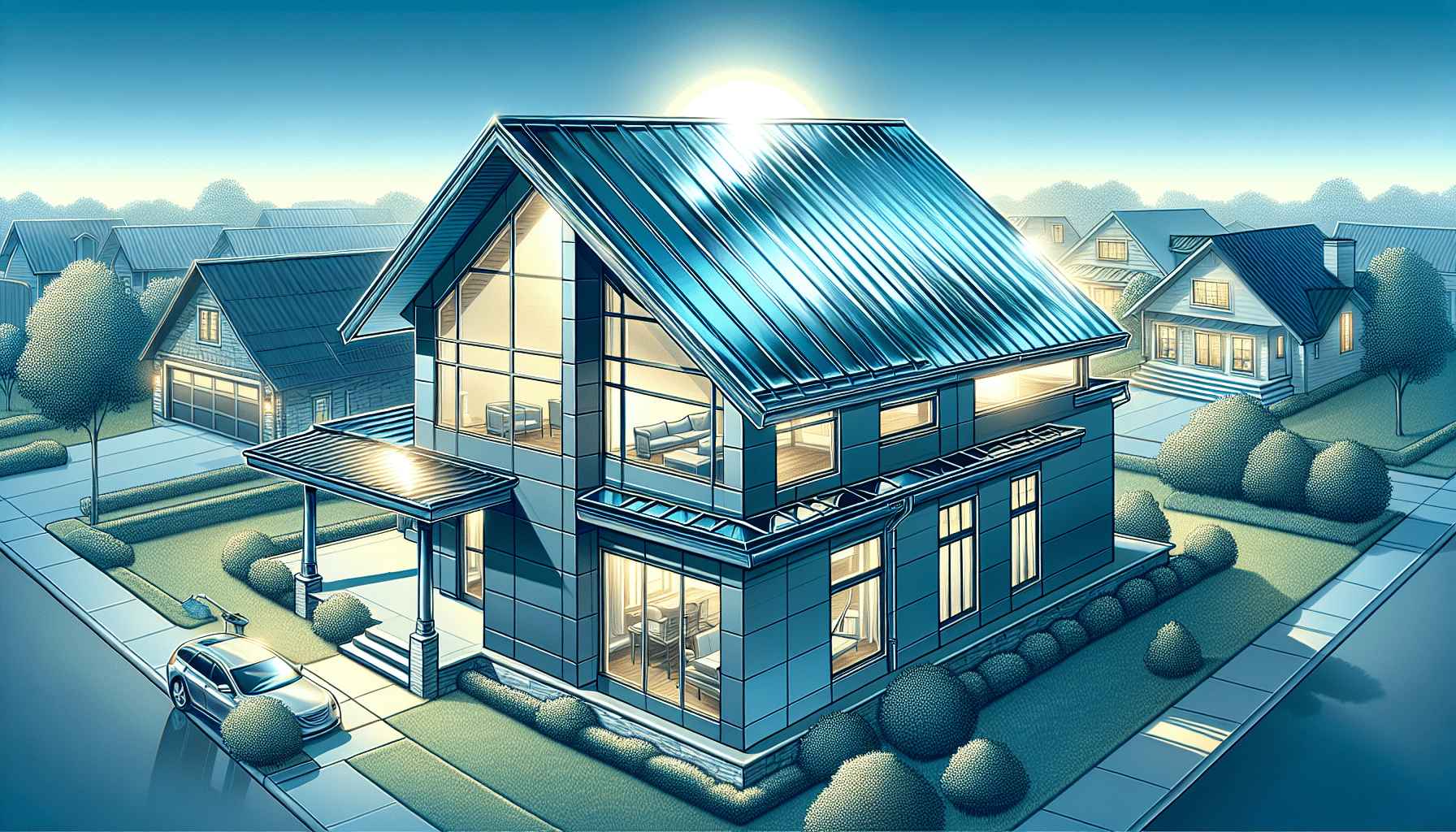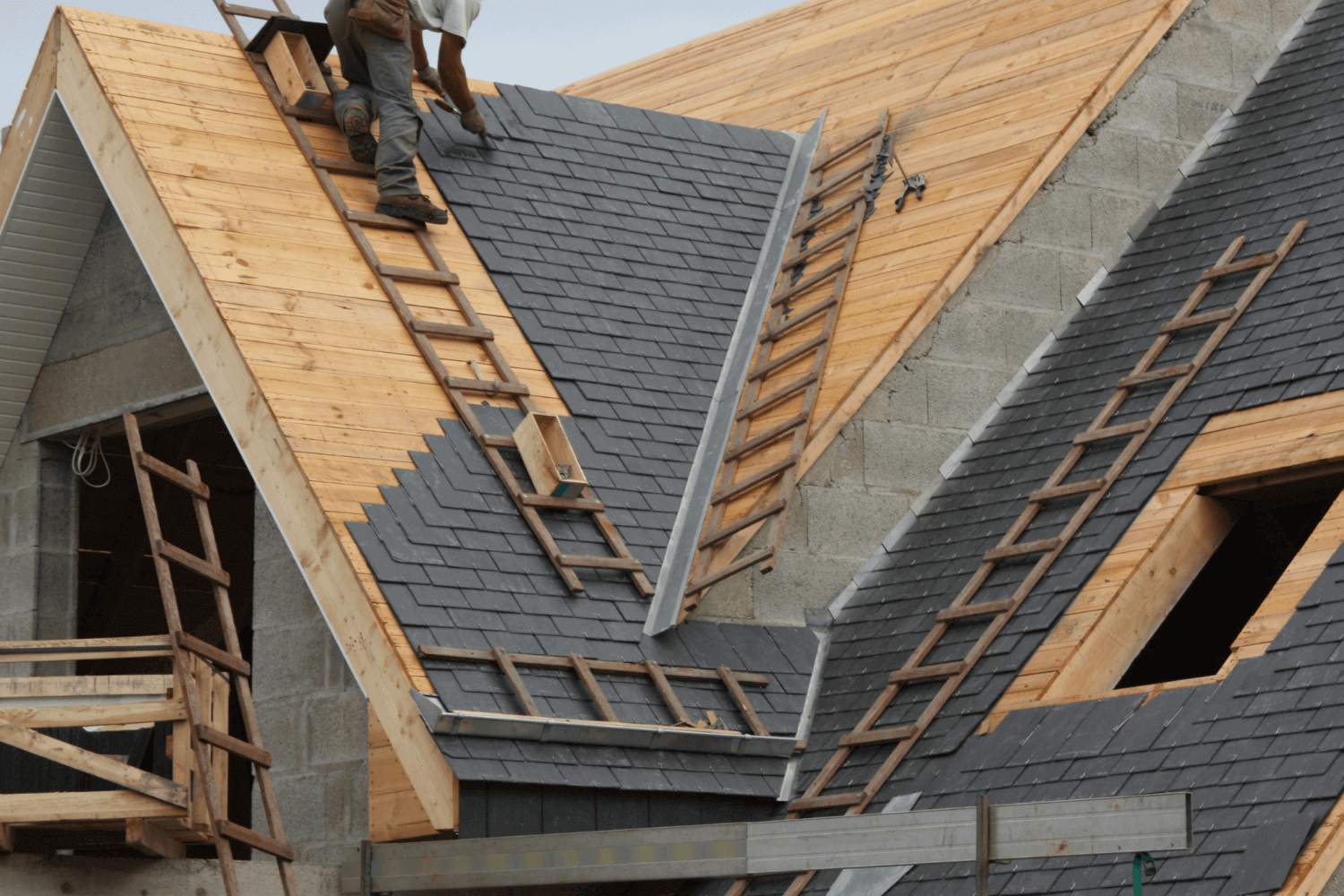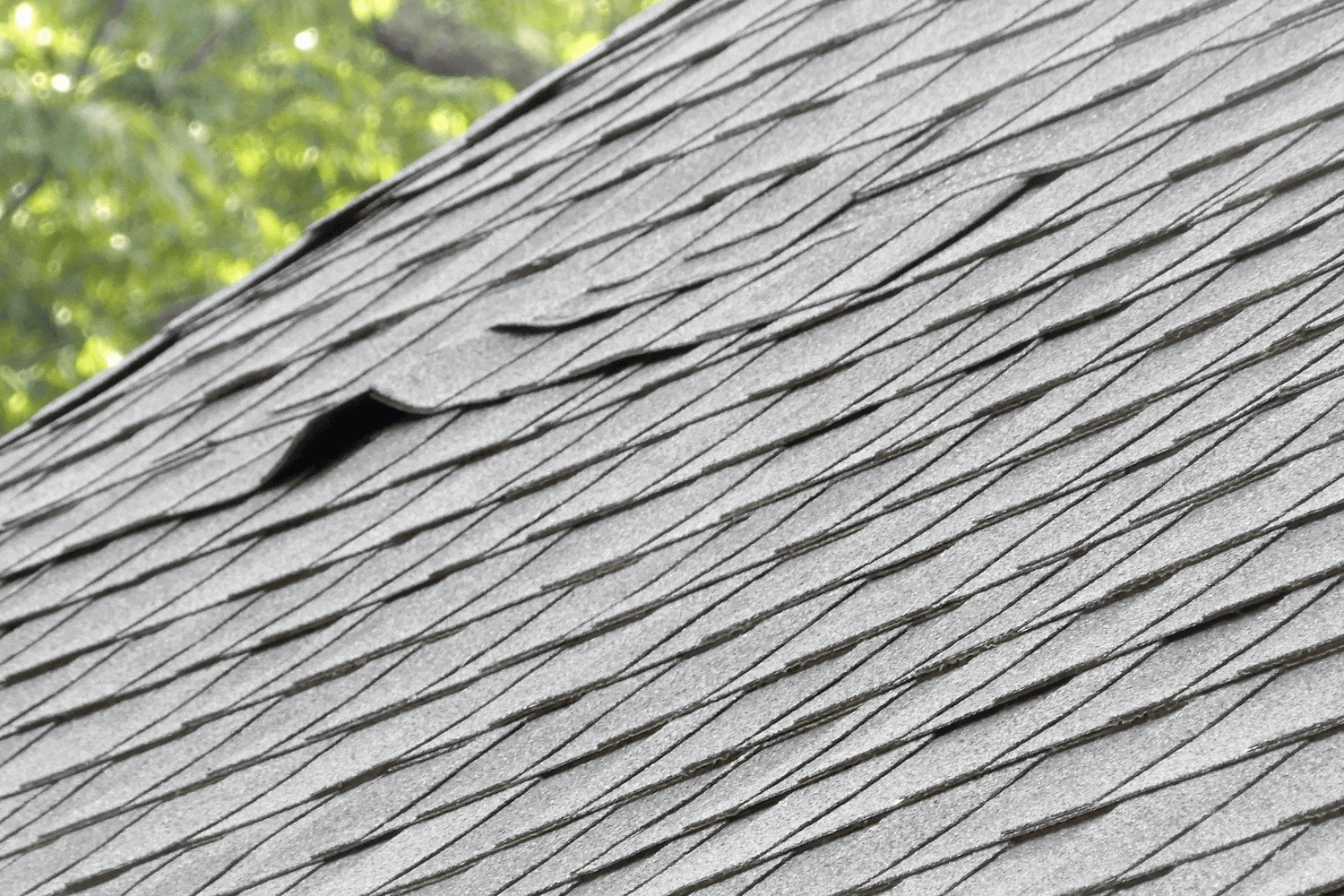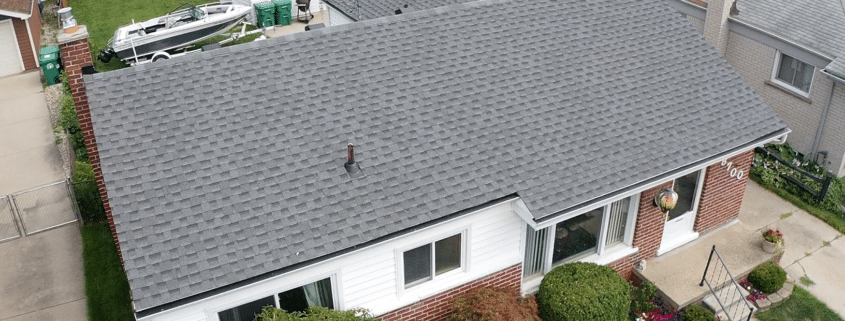Optimal Roof Lifespan: How Often Are Roofs Replaced?
Homeowners often wonder, ‘How often are roofs replaced?’ The answer isn’t simple: it ranges from 20 to 50 years based on materials, weather, and maintenance. This article cuts through the complexity to explain what affects your roof’s durability and how to know when it’s time for a replacement.
Key Takeaways
-
Roofing materials dictate lifespan; asphalt shingles last 20-30 years, metal roofs 40-70 years, and slate roofs can last 50-200 years, with variances due to maintenance and environment.
-
Replacements are triggered by damage signs such as granule loss, leaks, and structural weaknesses with more frequent inspections required in areas prone to severe weather.
-
Regular roof maintenance extends its life, while professional inspections assess repair or replacement needs, factoring in cost-benefit analysis and external influences such as climate.
The Lifespan of Various Roofing Materials

There are various options when it comes to roofing materials, each with its distinct lifespan. Some common roofing materials and their lifespans are:
-
Asphalt shingle roofs: can last up to 30 years with proper maintenance
-
Metal roofs: can last between 40 to 70 years
-
Slate roofs: can last anywhere between 50 to 200 years
But remember, these are average lifespans. The actual lifespan of your roof could be longer or shorter depending on how well it’s maintained and the environmental conditions it is exposed to. So, the question is, how can you tell if it’s time to replace your roof? And what can you do to extend its lifespan?
Asphalt Shingle Roofs: The Popular Choice
Asphalt shingle roofs, a type of asphalt roofs, are a favorite among homeowners for multiple reasons. They are cost-effective, aesthetically pleasing, and fairly durable. In optimal conditions, with consistent maintenance, an asphalt shingle roof can last anywhere from 20 to 25 years. However, the lifespan of these roofs, particularly asphalt shingles, can be significantly reduced if they are not properly maintained or are exposed to harsh environmental conditions.
One of the key warning signals of an asphalt shingle roof nearing the end of its lifespan is severe granule loss. Granules on the shingles protect the roof from sun damage, and their absence can compromise the roof’s integrity, leading to leaks. So, if you notice granules in your gutter, it might be time to consider replacing your asphalt shingle roof.
Metal Roofing: Durability and Longevity

When it comes to longevity and durability, metal roofs reign supreme. They have an average lifespan of 40 to 70 years, and in some cases, like copper roofs, they can last over a century! What contributes to this extended lifespan? A couple of key factors: their high resistance to wind, rain, snow, and impact, and their imperviousness to pests.
However, even metal roofs need some TLC. The longevity of metal roofing is also affected by local weather conditions, adherence to proper maintenance schedules, and the quality of the initial installation. Today, metal roofing systems employ advanced components like clip systems, fasteners, and accessories that utilize current technologies to optimize lifespan and performance.
Slate Roofs: The Century-Long Roof

Slate roofs are the marathon runners of the roofing world. They are highly durable and resistant to:
-
Water
-
Temperature fluctuations
-
Mold and mildew
With an impressive lifespan that can range from 50 to 200 years, slate roofs are a long-term investment.
But why are they so durable? Slate is derived from metamorphic rock, which is why it can be split into thin, durable sheets used for roofing tiles. Not only are they durable, but slate roofs also provide a classic and sought-after aesthetic, with natural color variations coming from the quarry in which the slate was mined.
Recognizing Signs That Your Roof Needs Replacement
Knowing when to replace your roof is crucial for maintaining the structural integrity of your home. There are some general indicators that suggest a roof may have reached the end of its useful life. These include missing shingles, leaks, and visible signs of sagging. If you notice these signs, it’s time to call in the experts for a thorough roof inspection.
While some signs, like missing shingles or leaks, are pretty straightforward, others might not be so obvious. Secondary signs of roof deterioration, such as:
-
moss or algae growth
-
cracked or curling shingles
-
dark spots or streaks on the roof
-
sagging or uneven roof surface
These signs might not seem like a cause for alarm, but they can lead to long-term damage by keeping the roof surface damp and allowing water to penetrate.
Warning Signals from Your Shingle Roof

When it comes to asphalt shingle roofs, there are some key warning signals you should be on the lookout for. As we’ve previously mentioned, granule loss is a big one. Granules protect the roof from sun damage, so their absence can lead to a compromised roof and potential leaks.
Another warning signal to watch out for is curling shingles. Shingles that are curling at the edges or in the middle are indicators that your roof may require replacement soon, as they can lead to roof leaks and subsequent interior property damage.
Moss growth on the roof, while more common in cool and moist climates, can trap moisture and eventually damage the shingles over time, which might lead to a need for roof replacement.
When Storm Damage Dictates Roof Replacement
Storm damage, including impacts from hail and high winds, can severely compromise a roof’s integrity, often necessitating a full replacement when key protective elements such as shingles are cracked, missing, or damaged. Not addressing these issues promptly can lead to severe consequences, such as leaks, drafts, or even collapse.
Following storm damage, unaddressed roofing issues can result in energy loss and higher energy bills. Therefore, it’s crucial to have your roof inspected and replaced promptly to maintain energy efficiency.
Timely roof repair after storm events play a crucial role in:
-
Preventing further damage to the roof
-
Maintaining the structural integrity
-
Potentially extending the life of the roof if a full replacement is not immediately required.
Extending Your Roof’s Life Through Maintenance
Now that we’ve discussed the signs that indicate your roof needs replacement, let’s talk about how to extend your roof’s life through proper maintenance. Here are some routine tasks you should do:
-
Clean gutters
-
Trim trees near the roofline
-
Apply preventative treatments like anti-moss or algae products
These tasks are crucial for roof longevity and maintaining the integrity of the roof decking.
Regular roof inspections with a licensed contractor can help catch small problems early, manage debris accumulation, and address issues like moss or algae. This not only helps prevent moisture retention that leads to water damage but also ensures a safe and comfortable living environment for you and your family.
Regular Inspections: A Preventative Measure
Regular roof inspections are a preventative measure that can catch small issues early on, reducing the likelihood of large-scale damage and extensive repair costs. Most roofing professionals recommend inspections at least once every two years, but older roofs or those with prior damage may require more frequent checks.
Licensed roofing contractors are equipped to provide thorough assessments, identifying needs for repair or replacement, thus ensuring the longevity of the roofing system. Inspections serve as a preventative measure, facilitating early detection of potential problems, which is crucial for extending the lifespan of a roof and maintaining home safety.
Addressing Repair Needs Promptly
Addressing repair needs promptly is another key factor in extending your roof’s life. Regular maintenance and timely repairs can significantly prolong a roof’s lifespan, ensuring many years of reliable protection. Minor damages may be addressed with repairs, but significant wear or leaks often justify a complete roof replacement.
Ignoring minor problems can lead to extra expenses, as neglected damage often requires more extensive and costly repairs or even premature roof replacement. Therefore, it’s crucial to address roof damage and leaks promptly.
In Michigan, where the weather can be particularly harsh, preventing minor issues from turning into significant structural damage is essential.
Rapid Roofing’s Approach to Roof Replacement
Rapid Roofing, a distinguished residential roofing contractor operating in Michigan and northwest Ohio, leverages over 30 years of experience in roof replacement and storm damage repair to deliver trusted services. They have a stellar reputation in the Ann Arbor, Michigan community and have received positive reviews from entities such as Google, Angie’s List, and the BBB.
Known for streamlining the roof replacement process, Rapid Roofing prioritizes client convenience, typically completing most jobs within a single day. This quick turnaround time, combined with the use of cutting-edge technology and high-quality materials from trusted brands, has contributed to their high customer satisfaction.
Their services are comprehensive and include:
-
A 17-point inspection
-
Free consultation to identify optimal solutions
-
Updates to insulation and ventilation systems, ensuring the complete functionality of the roofing system.
Case Studies: Successful Replacements by Rapid Roofing
Rapid Roofing’s track record of successful roof replacements is evident in their positive reviews and customer testimonials. One standout project included completing a roof for a grandmother in just one day, leading to the roof looking amazing and customers spreading recommendations. Customers frequently commend Rapid Roofing for their efficient work, quick scheduling, and a high level of professionalism throughout the replacement process.
Feedback consistently highlights Rapid Roofing’s timeliness in project execution, the neatness of the worksite, and the outstanding customer service provided by their crew and project managers. With such a strong reputation, it’s no wonder they are a trusted name in the roofing industry.
The Benefits of Working with a GAF MasterElite Contractor
Working with a GAF MasterElite Contractor like Rapid Roofing brings several benefits. As part of a select group that constitutes only 2% of all roofing contractors in the U.S., GAF MasterElite Contractors represent a high level of professionalism and quality. Homeowners choosing a GAF MasterElite Contractor can be assured of exceptional workmanship due to the strict training and standards required for the certification.
Rapid Roofing offers the following services:
-
Fulfilling the rigorous standards of GAF certification
-
Ongoing training to keep abreast of the latest roofing techniques and industry updates
-
One-day roof replacement service
-
Free estimates
-
Full warranty as a GAF MasterElite Contractor
These services not only ensure quality assurance but also enhance the customer experience.
Making an Informed Decision: Replace or Repair?
The decision to repair or replace a roof hinges on various factors like:
-
the age of the roof
-
the degree of any present damage
-
available budget
-
the homeowner’s future plans for the property
Asphalt shingle roofs typically need repair or shingle roof replacement after 20 to 30 years, and a professional roof inspection can help confirm whether the roof has reached this stage.
In some cases, external factors such as poor ventilation can accelerate the aging of a roof, sometimes making replacement unavoidable even when the roof is around 20 years old. A thorough inspection of the roof, both inside and out, is essential to determine its current condition and whether repair or replacement is necessary. Minor damages may be addressed with repairs, but significant wear or leaks often justify a complete roof replacement.
Evaluating Roof Condition with Expert Help
Professional roof inspections are crucial in assessing the actual condition of a roof, providing essential information for homeowners to make an informed decision on repair or replacement needs. Expert roof inspectors can:
-
Precisely determine the age and level of disrepair of a roof
-
Identify any structural issues or damage
-
Assess the overall integrity of the roof
-
Provide recommendations for repairs or replacement
This information is a critical factor in deciding whether to opt for repairs or a full replacement.
Roof inspectors offer additional value by working with insurance companies, potentially aiding homeowners in getting roof damages covered under their policy. Rapid Roofing’s sales team provides comprehensive explanations that help homeowners understand the scope and benefits of investing in roof replacement, ensuring their comfort with the decision.
Cost-Benefit Analysis of Roof Replacement vs. Repair
A full replacement provides not only long-term protection but also peace of mind and may be more cost-effective than serial repairs as a roof nears the end of its lifespan. Replacing a roof can prevent costly future property damage caused by water intrusion from an aging or failing roof. Financing options are available that can help homeowners manage the cost of a new roof through more manageable payments.
Roof repairs typically cost less than a full replacement and are suitable for minor, isolated incidents of damage. However, delaying the replacement of an old roof that’s due for replacement can lead to bigger, more expensive problems down the line. It’s crucial to weigh the immediate costs of roof replacement against the potential future costs of neglecting necessary repairs.
The Impact of External Factors on Roof Replacement Frequency
External factors, such as climate and energy efficiency, can significantly impact the frequency of roof replacements. Roofing materials and climate are significant factors that impact the lifespan of a roof, especially in regions like Northern Illinois. For example, asphalt shingle lifespan is especially affected by climate and temperature variations.
Severe weather conditions, including heavy rainfall, snowfall, or high winds, require more frequent roof inspections, potentially leading to earlier roof replacements. Roofs installed by trusted professionals in Northern Illinois are designed to last as long as possible, reducing the frequency of replacements.
Adapting to Climate Challenges in Michigan and Northwest Ohio
Rapid Roofing operates in Michigan and northwest Ohio, including Toledo. These regions present unique climate challenges that can impact roofing solutions. Currently, there is a lack of specific data on these unique challenges.
However, homeowners in the service areas of Rapid Roofing need tailored roofing solutions that address the specific weather patterns and average climate conditions in these regions.
Enhancing Energy Efficiency with a New Roof

A new roof can significantly improve a home’s energy efficiency by enhancing insulation and ventilation. Metal roofs and reflective shingles contribute to energy savings by reflecting UV and infrared light rays, reducing heat absorption, and helping maintain cooler home temperatures.
Metal roofing materials offer several benefits:
-
They are often composed of 25-95% recycled content, making them environmentally friendly.
-
They enhance energy efficiency, reducing heating and cooling costs.
-
They are fully recyclable at the end of their life, further reducing environmental impact.
-
Roof replacement with energy-efficient roofing material can be economically advantageous, thanks to potential government incentives.
-
They also increase a home’s curb appeal and value.
Summary
In this journey, we’ve explored the different roofing materials, their lifespans, and the factors that impact them. We’ve identified the signs that indicate your roof needs replacement and discussed the importance of regular maintenance and timely repairs. We’ve also highlighted the expertise of Rapid Roofing in roof replacement. Remember, your roof is your home’s first line of defense against the elements. By understanding how to care for it and when to replace it, you can ensure a safe and comfortable living environment for years to come.
Frequently Asked Questions
What is the typical life expectancy of a roof?
A roof’s typical life expectancy ranges from 25 to 50 years, depending on the material’s quality and durability.
Why do roofs need to be replaced?
Roofs need to be replaced when factors such as storm damage, ice dams, or the presence of mold, moss, and algae cause deterioration, leading to visibly curling or falling shingles.
How many times can a roof be Reshingled?
You can reshingle a roof two or three times, depending on local building codes. After that, you may need to replace the entire roof, with the frequency of reshingling depending on the type of roof, maintenance, and its lifespan.
Can my roof last 30 years?
Yes, asphalt shingles can last between 15 and 30 years, depending on weather conditions and the type of shingle used. Architectural shingles may last up to 30 years, making them a durable option for your roof.
How can I extend my roof’s lifespan?
Regular maintenance and timely repairs, such as replacing missing shingles, cleaning gutters, and applying anti-moss or algae treatments, can significantly extend your roof’s lifespan.


 Residential Roofing
Residential Roofing Storm Damage
Storm Damage Multi-Family Homes
Multi-Family Homes
